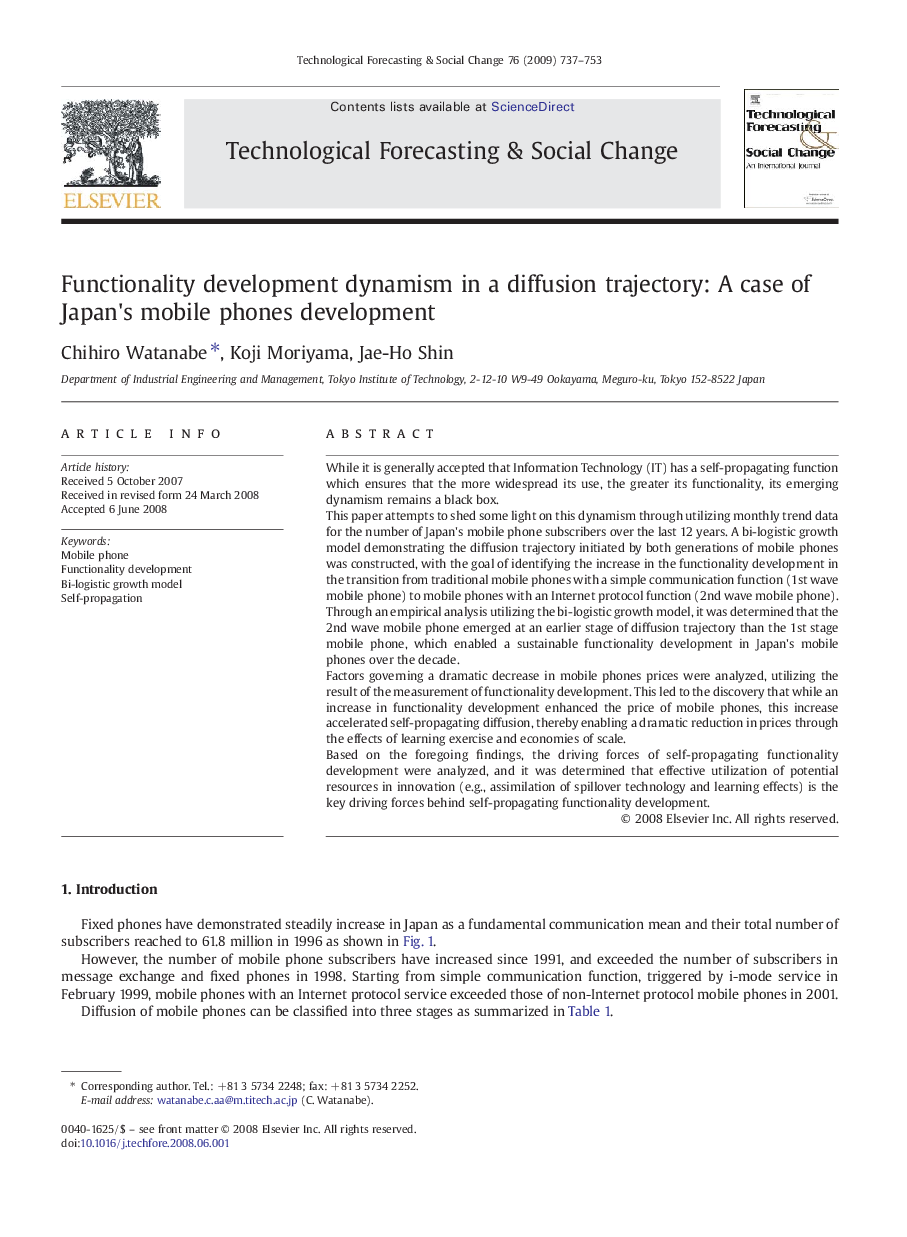| Article ID | Journal | Published Year | Pages | File Type |
|---|---|---|---|---|
| 897224 | Technological Forecasting and Social Change | 2009 | 17 Pages |
While it is generally accepted that Information Technology (IT) has a self-propagating function which ensures that the more widespread its use, the greater its functionality, its emerging dynamism remains a black box.This paper attempts to shed some light on this dynamism through utilizing monthly trend data for the number of Japan's mobile phone subscribers over the last 12 years. A bi-logistic growth model demonstrating the diffusion trajectory initiated by both generations of mobile phones was constructed, with the goal of identifying the increase in the functionality development in the transition from traditional mobile phones with a simple communication function (1st wave mobile phone) to mobile phones with an Internet protocol function (2nd wave mobile phone).Through an empirical analysis utilizing the bi-logistic growth model, it was determined that the 2nd wave mobile phone emerged at an earlier stage of diffusion trajectory than the 1st stage mobile phone, which enabled a sustainable functionality development in Japan's mobile phones over the decade.Factors governing a dramatic decrease in mobile phones prices were analyzed, utilizing the result of the measurement of functionality development. This led to the discovery that while an increase in functionality development enhanced the price of mobile phones, this increase accelerated self-propagating diffusion, thereby enabling a dramatic reduction in prices through the effects of learning exercise and economies of scale.Based on the foregoing findings, the driving forces of self-propagating functionality development were analyzed, and it was determined that effective utilization of potential resources in innovation (e.g., assimilation of spillover technology and learning effects) is the key driving forces behind self-propagating functionality development.
